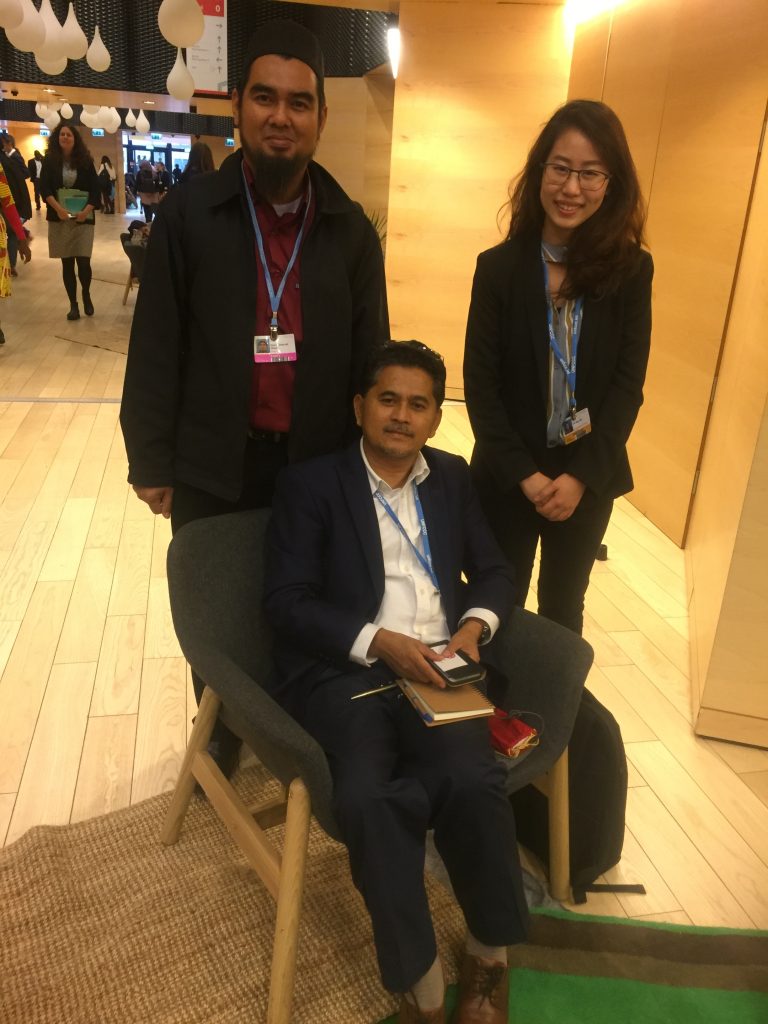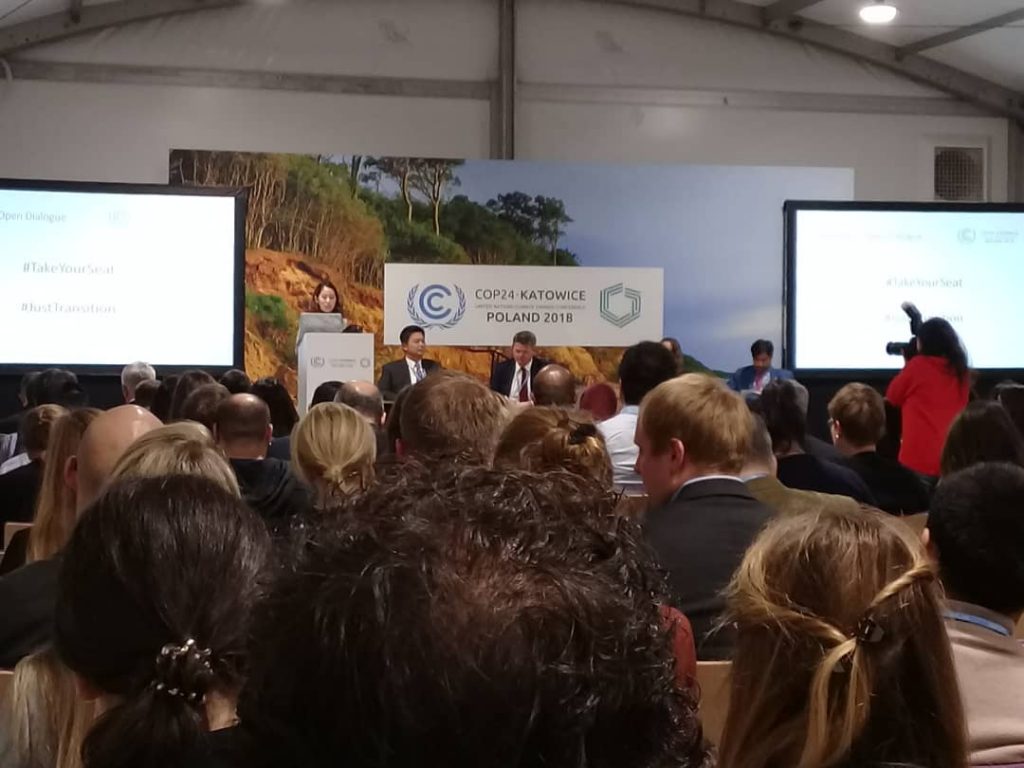A week ago, I had just left Katowice. While waiting to board my flight, a French delegate sat beside me. As our phones charged, we talked about our experiences at COP 24. I expressed my excitement coming into the conference, as a first-timer at COP and an optimist. In return, he asked me how I felt about the progress about the Paris Rulebook. I replied that I was really worried about the outcome, as most agenda items were inconclusive and discussions were prolonged. Candidly, he responded that he felt the same way. What else could we have expected? COP 24 was supposed to conclude yesterday anyway.
This being my last post, I would like to share a short summary of the progress made in adaptation. I ended up tracking a few items that are closely related – adaptation communications, adaptation fund and adaptation committee. In the past week, I observed that there was still a lot of disagreement between Parties, down to the smallest detail in texts. I also got to see many of the key themes and negotiation tones in action, like CBDR and the tension between mitigation and adaptation. Initially, I had trouble picking out these tones when I attended informal consultation sessions, because it was hard to relate textual matters to the negotiation dynamic in play. Over time, I was able to pick up on these overarching conditions especially when bloc representatives were speaking. I also noted that bigger players like China, the United States and Russia would ride these thematic issues to carry forward their own Party’s stance.
Adaptation Communications
Discussions on adaptation communications related mostly to public registry matters. In the first week, there were proposals to separate adaptation reporting from mitigation under the public registry, but ultimately they remained unadopted. Later on, Parties moved on to discuss the reporting methods and standards. I observed a big push from the LDCs and SIDs to have less standardized formats so that states with less capacity could submit reports according to their own timeline and own reporting limitations. When I left, Parties were disappointed with the new text under APA Agenda item 5 because they noted that the progress made underlying CBDR, and reporting of climate change impacts and adaptation have been deleted. The latest text on public registry matters contains elements on reporting flexibility and common web platform for report submission and access. Strong language underlining the urgency of adaptation and developing nations’ efforts in adaptation are seen in the latest adaptation communications draft text.
Adaptation Fund
In regards to negotiations around adaptation fund, I was unable to attend most of the sessions. The expectation heading into COP 24 was to see more effort coming from developed countries in aiding and financing innovation, capacity-building and technological transfers in developing countries. More attention was definitely allotted towards increasing financing pledges, with a resource mobilization goal of US$ 90 million in 2018. Discussions were expected to take place on the UN Clean Development Mechanism’s role in the adaptation fund, as the Paris Rulebook materializes. Heading into the second week of negotiations, there was tension between the developed and developing countries on equity of financing adaptation measures. Developed party blocs like the EU continue to avert financing responsibilities. For example, in the Adaptation Fund contact group, suggestions on “multi-level” approaches were made to separate technical assistance from political assistance, which reflected a reluctance from developed countries to commit to financial contributions. New Zealand and Sweden continue as leaders in financing adaptation measures in developing nations. However, as the second week progressed, issues still remained on sharing of proceeds to the Adaptation Fund. Media outlets have noted further pushback on outcomes to future body meetings.
Adaptation Committee
The Adaptation Committee, established under the Cancun Adaptation Framework to help enhance adaptation action and implementation proceeded well. The main expectation of the AC in COP 24 was to produce a report, listed as agenda items 3 and 11 of SBSTA and SBI respectively. The draft report, introduced on the 6th of December, noted the progress made on technical expert consultations and meetings in 2018. The committee reports that such meetings will continue in 2019, as the committee begins the implement the 2019 – 2021 workplan. Gender was highlighted as an important point of consideration in adaptation planning and implementation processes. Parties and stakeholders were encouraged to utilize climate and ecological knowledge. The report also notes the lack of available data, and encourages Parties to have more monitoring and evaluation systems. Concerns on lack of financial resources was noted in the report, and that there will be resulting adaptation implications.



